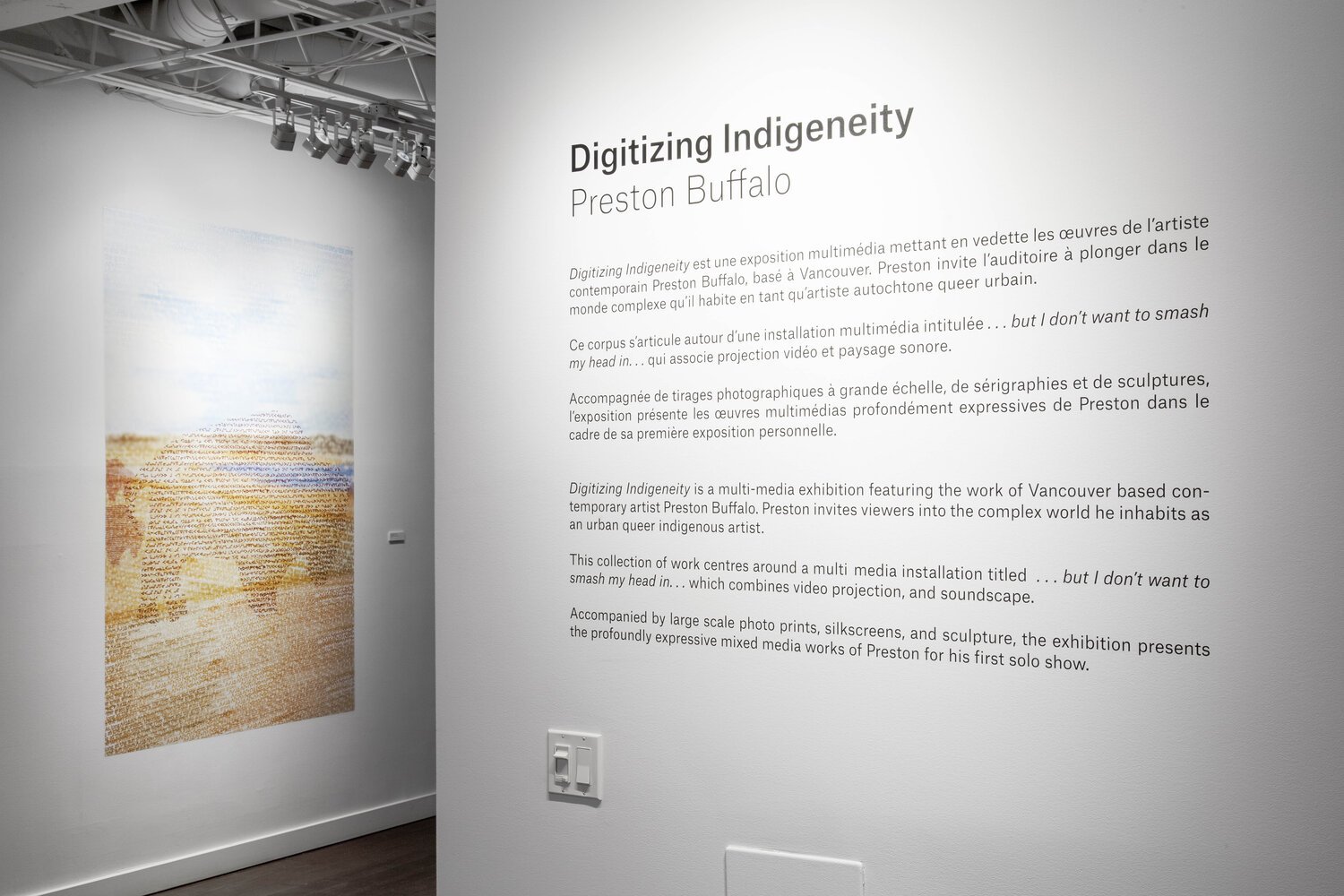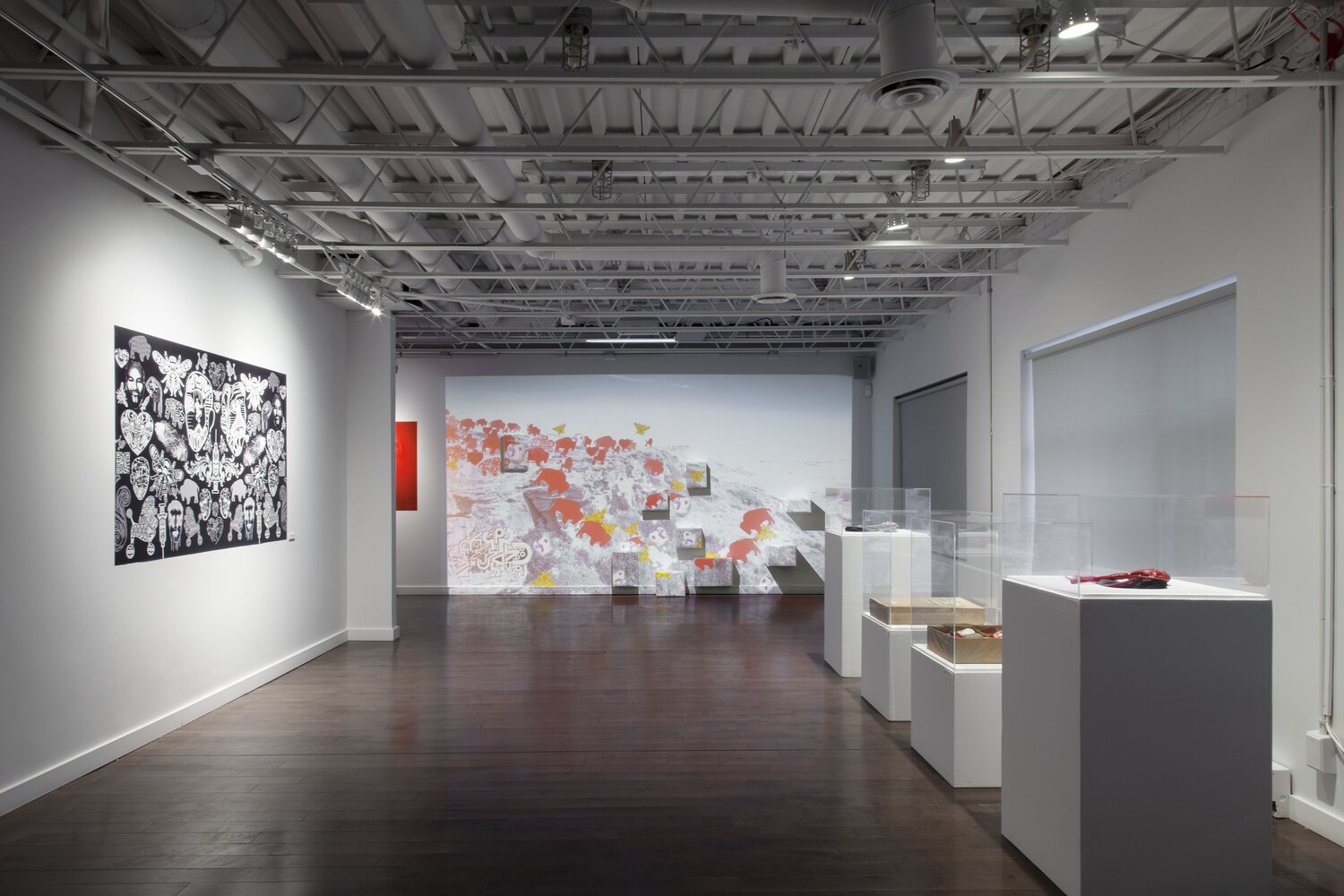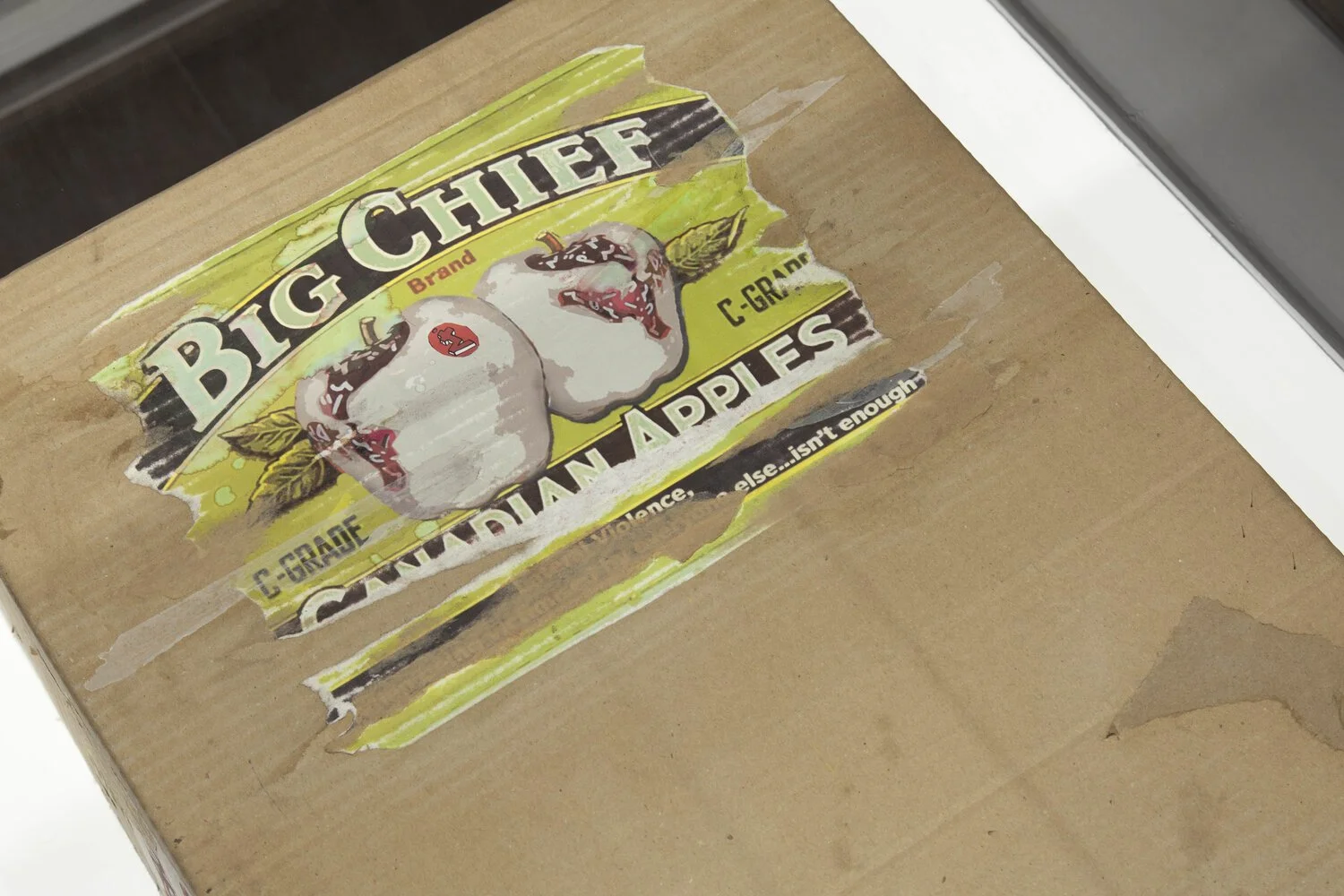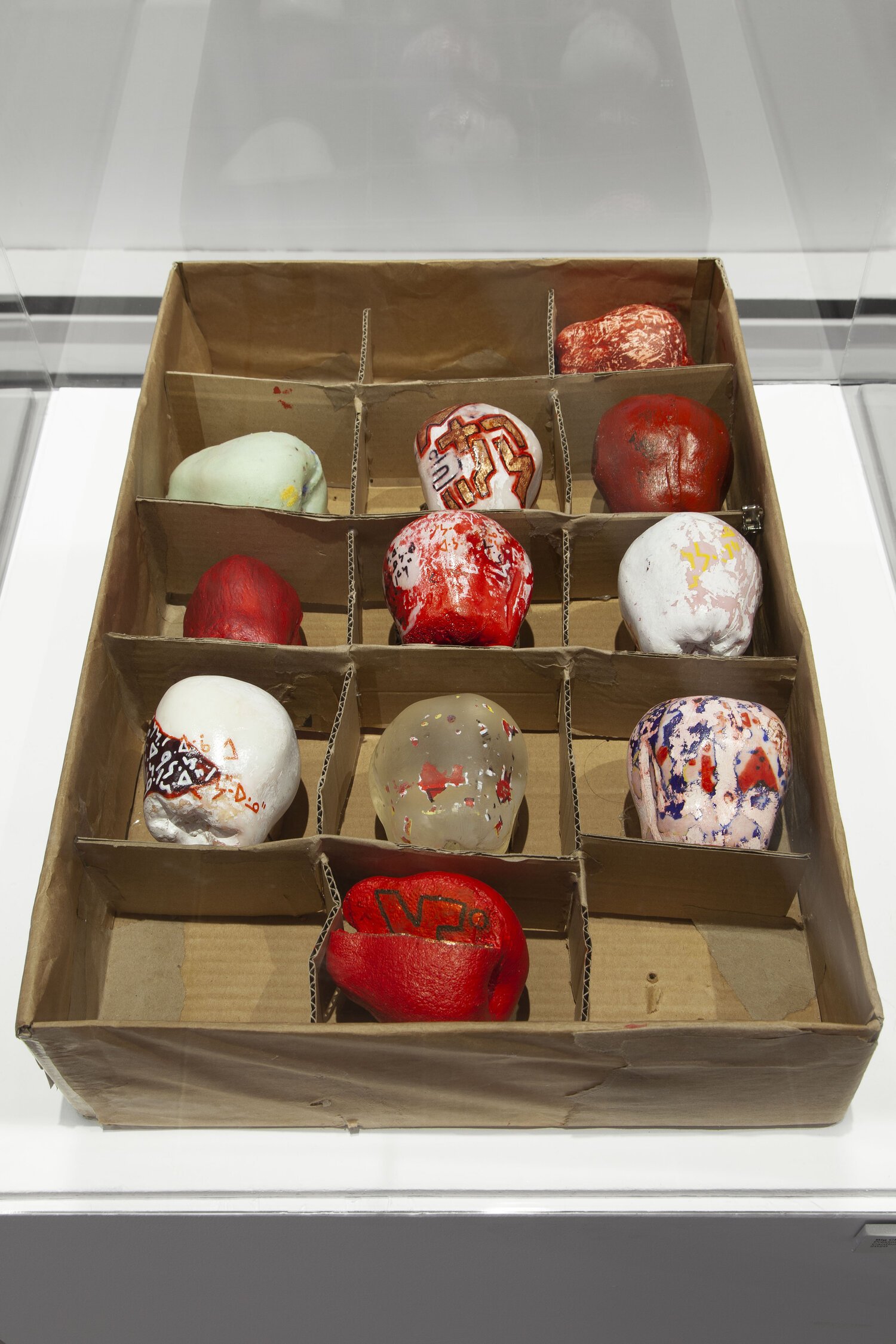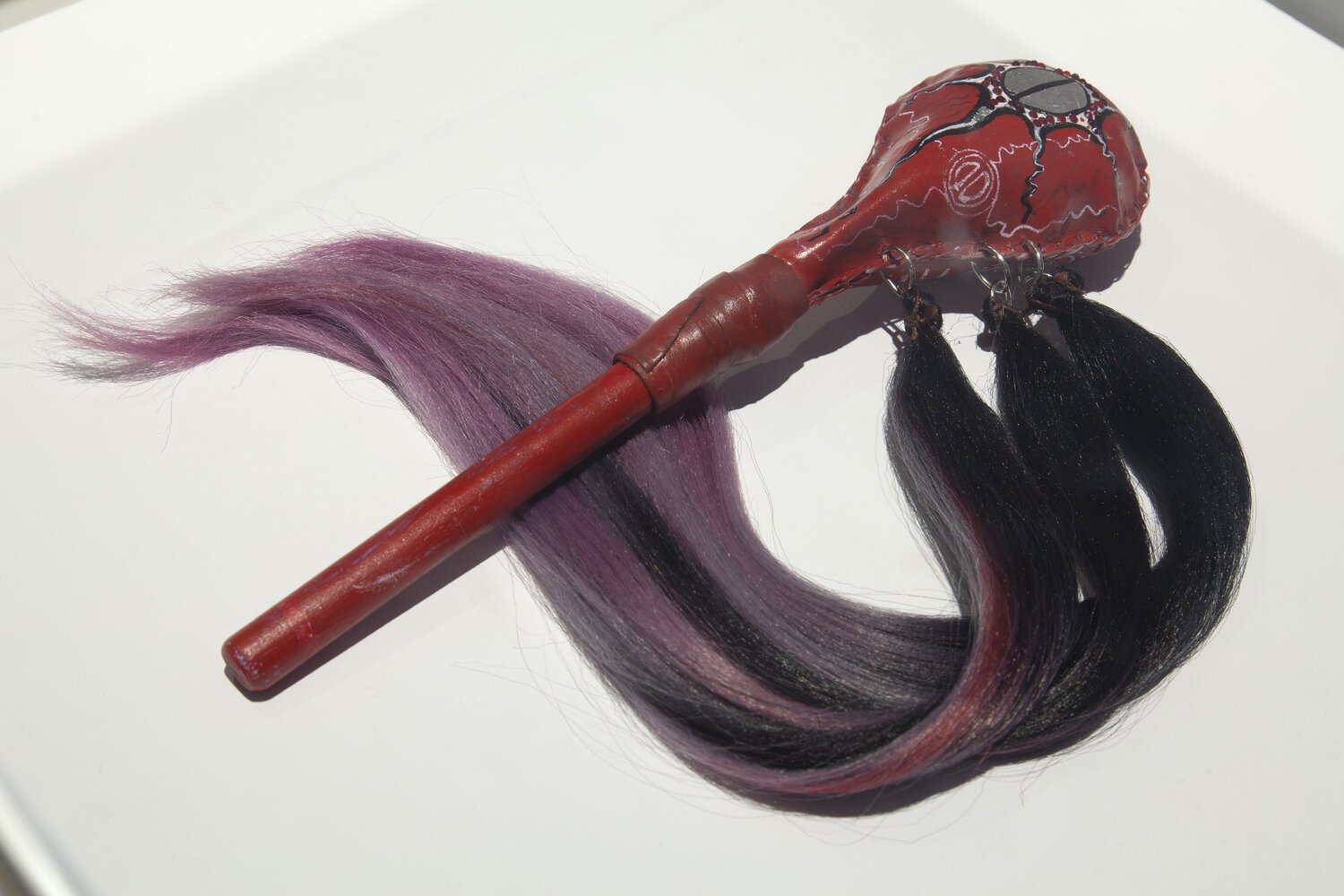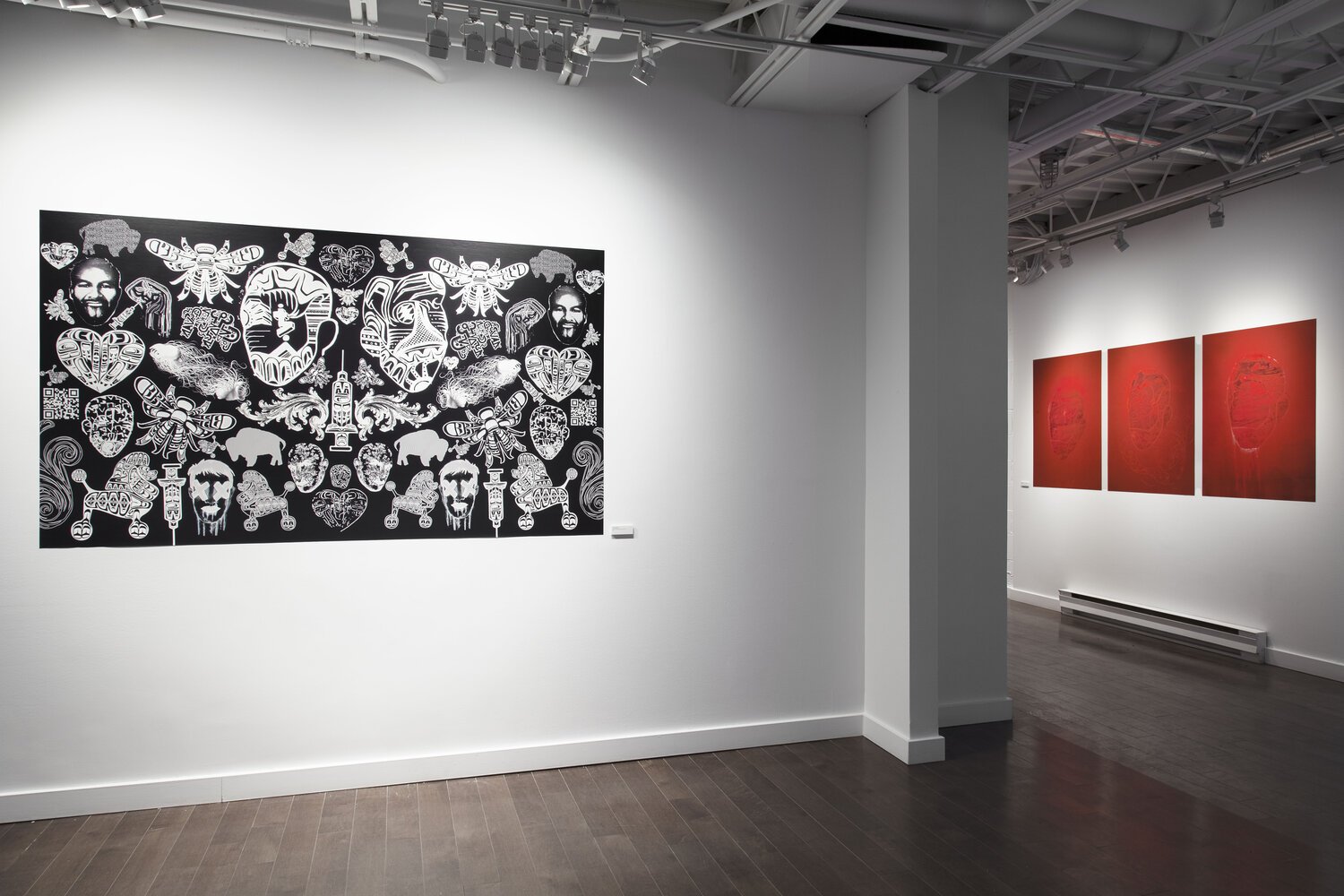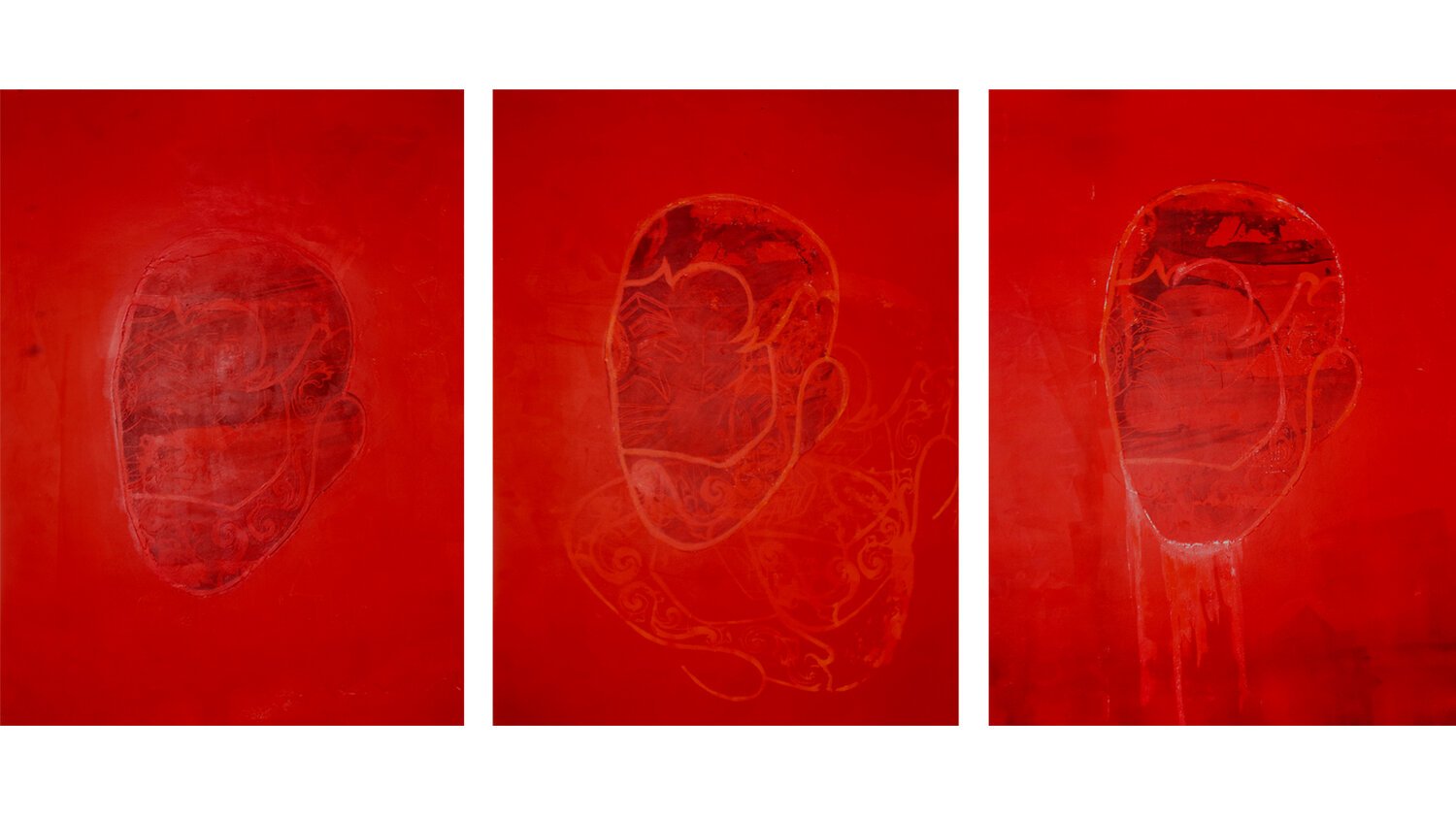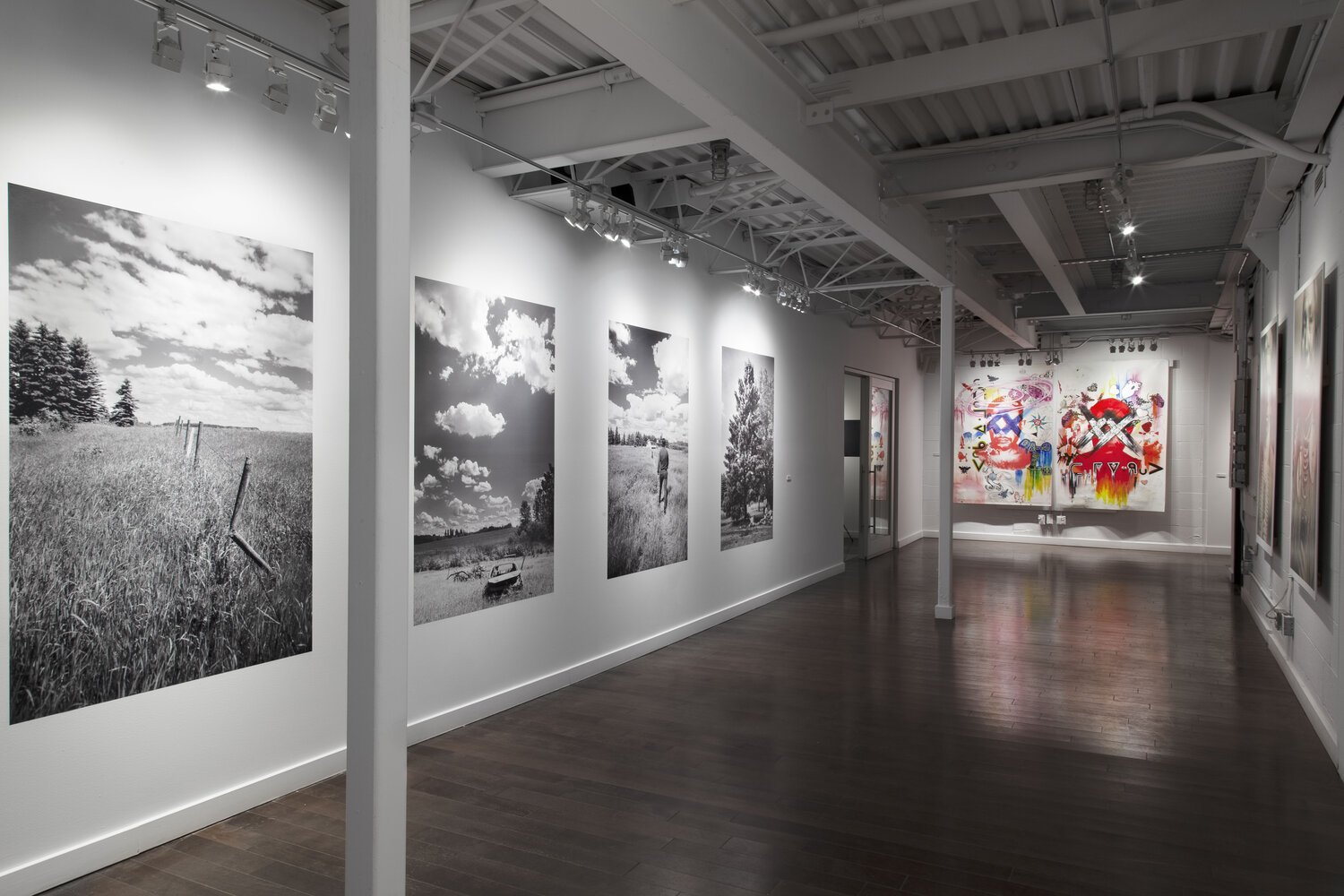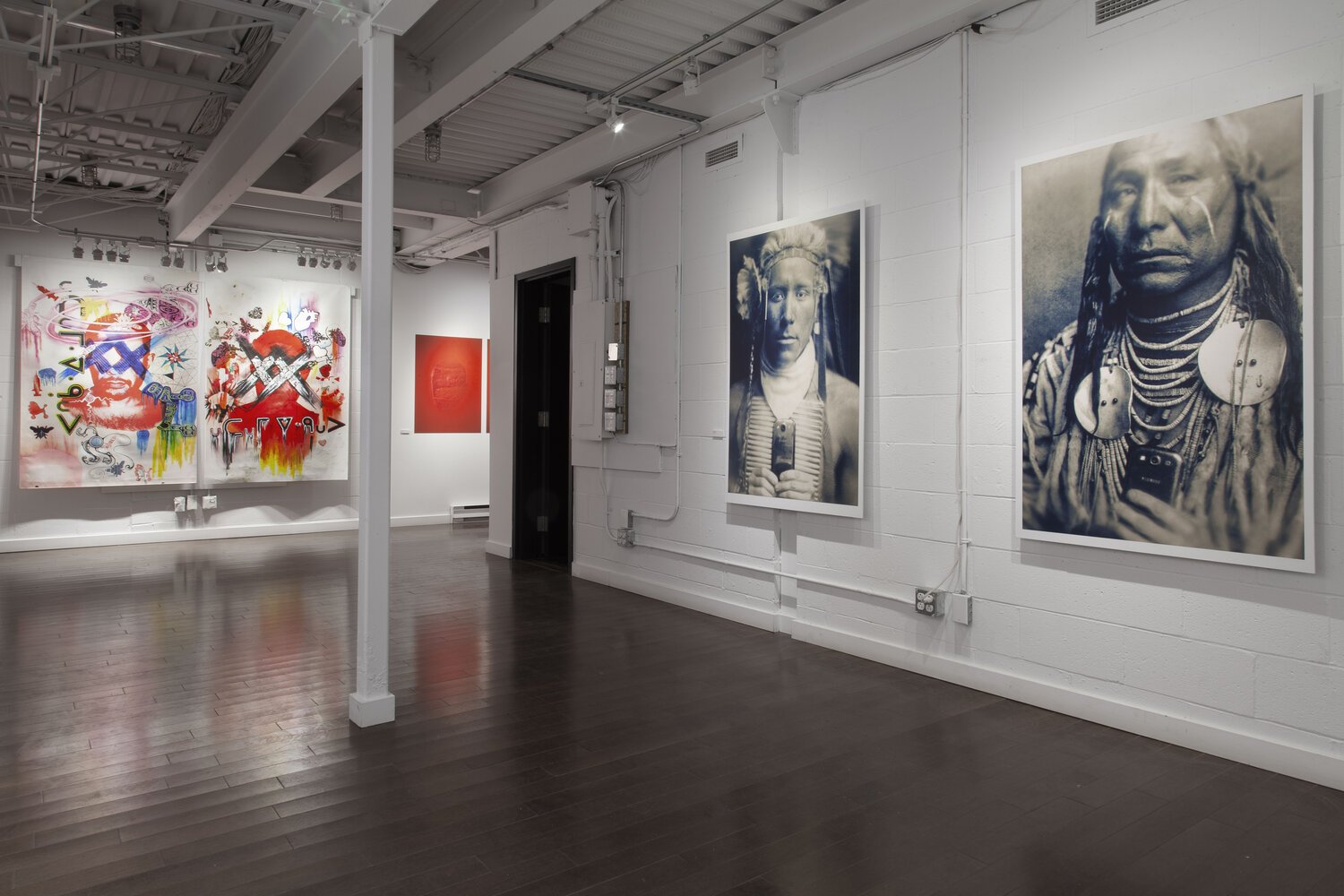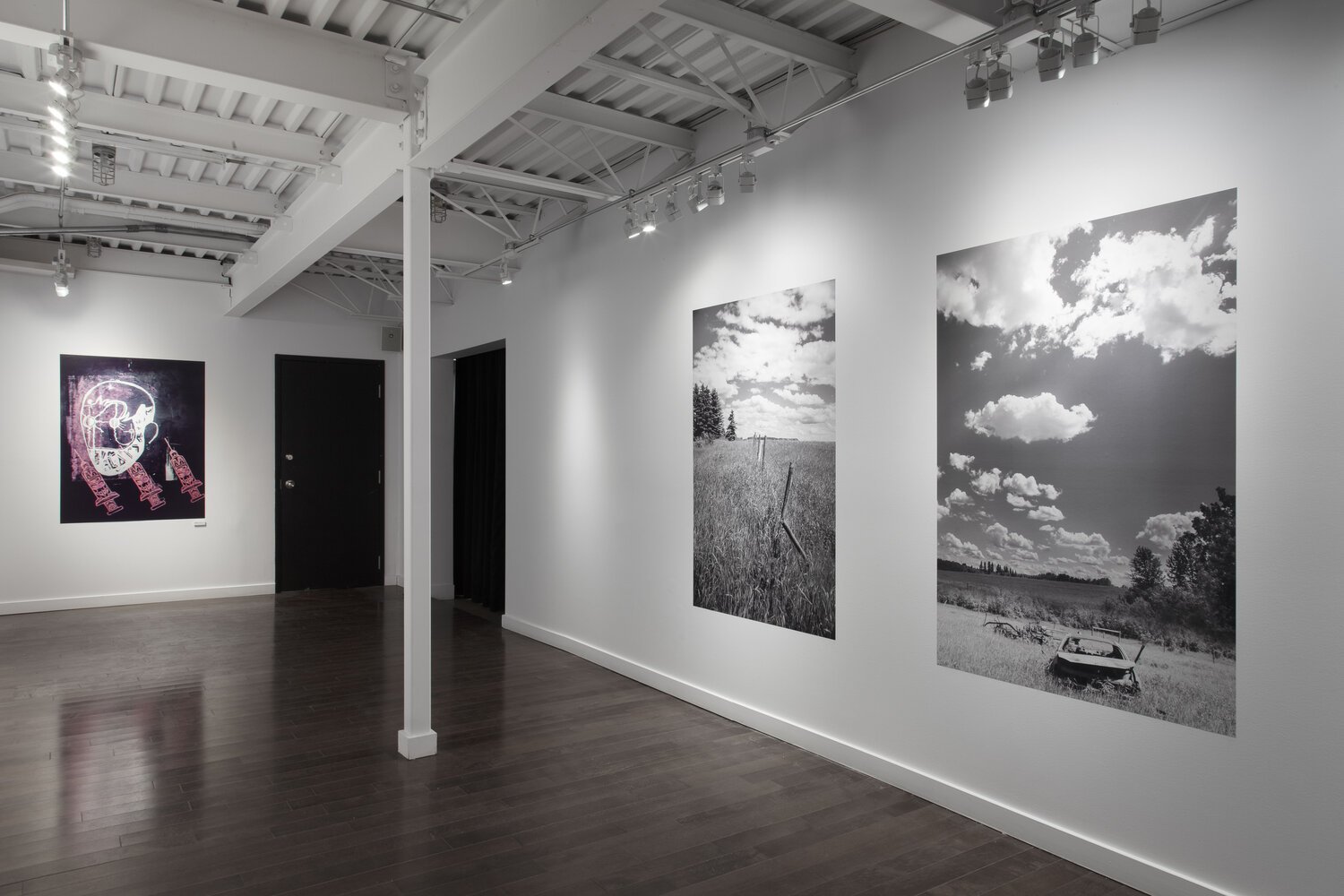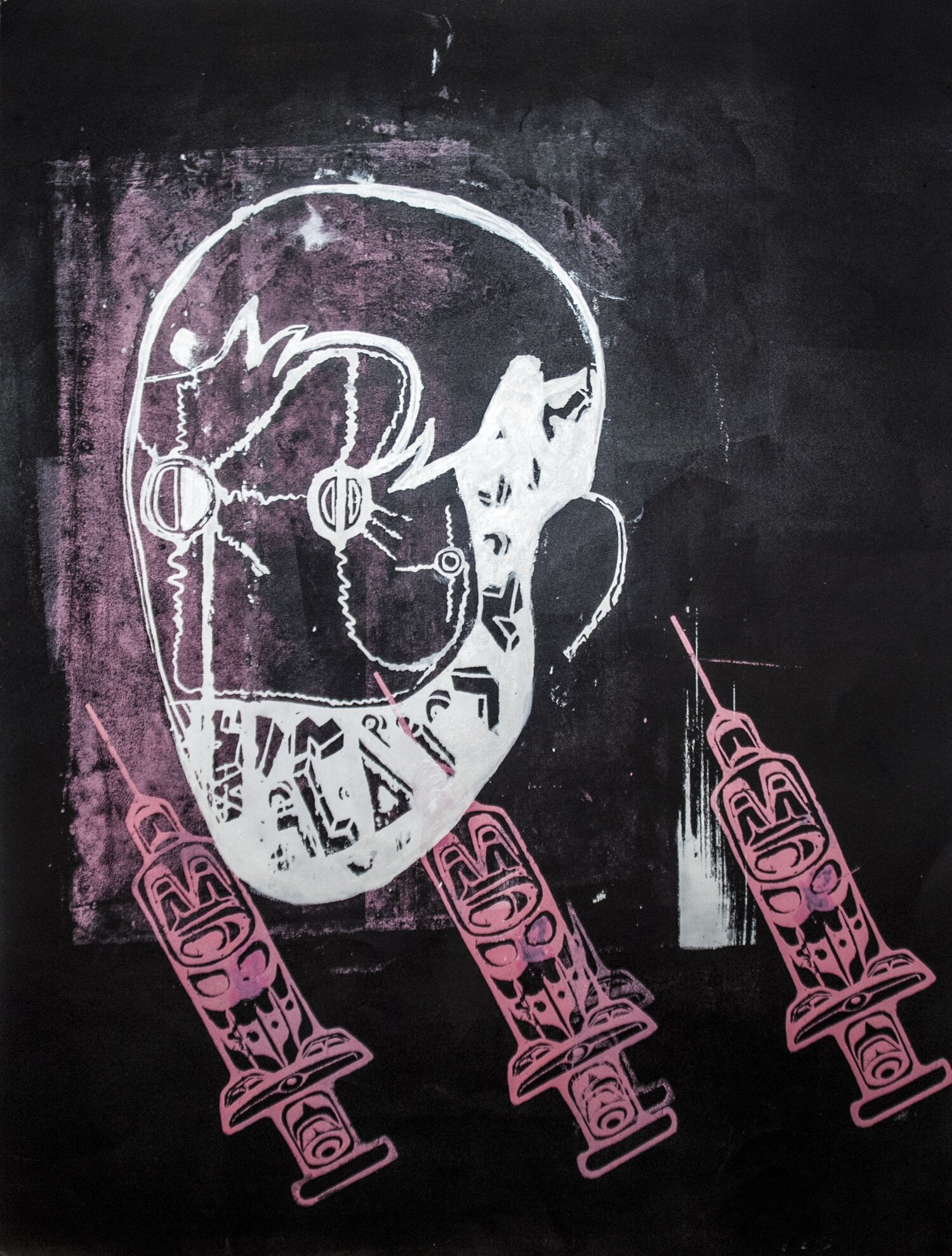Welcome to the catalogue of DIGITIZING INDIGENEITY, featuring the work of Vancouver based artist Preston Buffalo, which I curated for Never Apart in Montreal, Quebec Canada. The exhibition launched online as a virtual tour on April 29th, 2020 on Never Apart’s website and social media channels, and was on display from April 17 - June 26, 2021.
Preston Buffalo is a Two Spirit, Cree man who lives and loves in the unceded Coast Salish Territories in British Columbia. His interdisciplinary work uses photography, printmaking, digital illustration and sculpture to create visual representations of personal Indigenous iconography and symbolism to explore issues such as addiction, loss of culture and language. His journey to find connection often meets at the intersection of hyphenated identities.
Digitizing Indigeneity is a multi-media exhibition which invites viewers into the complex world he inhabits as an urban queer indigenous artist.
Iconography Mural
Printed Assemblage - digital creation
2021
Preston considers this a look into his portfolio. “It’s all the symbolism and icons that I've created myself or feature in my work.” Visitors who scan the QR code that Preston has discretely inserted into the work will be taken to his website to learn more about him.
Big Chief Apples
Cardboard - Resin -Foam
2020
Preston created this piece as a reference to a slur that he has personally encountered as a child of a White mother and Indigenous father. It addresses the Lateral Violence prevalent within Indigenous culture. An “Apple” is a slur used toward other First Nations individuals who they feel have become too culturally embedded in caucasian society. (Apples being red on the outside, white on the inside).
Preston says “I felt like I wanted to represent that. I [learned] that there was a company back in the 1930s, called Big Chief Apples. This was their actual logo, but I first personalized it and added my own apples into it. I then made the apple box and each individual apple. Some of them are white with red on the inside. Some of them are random, perhaps reading as more red than white, but they all meld together. Cree Syllabics are written on the apples, syllabics being the post settler written language of the Plains Cree, some of which are opaque and parts that are translucent. Some are a squishy texture, some are hard, and they are all damaged in their own way”.
Silent Rattle 1-2 (of 3)
Elk hide, Cedar handle, Monofibre,
2020
Rattles
Emily Carr University of Art and Design (ECUAD), where Preston is currently working on his BFA, offers a credited Material Practice program to reconnect students with the traditional arts and crafts of their backgrounds. The Aboriginal gathering place at ECUAD assembles these boxes of material practice for Indigenous students to take home during the pandemic, which is what Preston used to create these rattles, in combination with synthetic hair and the rings attached. It’s worth noting that the artist has intentionally made these rattles silent.
. . . But I don’t want to smash my head in . . .
Photo Illustration - 2021
“…but I don’t want to smash my head in …”
This is an archival/public domain image of Head Smashed in Buffalo Jump in Fort McLeod, Alberta, taken in the early 20th century. Although not exactly where Preston’s tribe of origin is based, it is quite close geographically, and the Buffalo is of course Preston’s family namesake. The viewer of the this work sees a stampede of the Icons and Symbols featured in Prestons work heading over the edge of the cliff of Head Smashed in Buffalo Jump. A lone White Buffalo, with a hint of red around the edges, watches from the side. The soundscape playing is a cassette recording of the Pow wow singing group “The Pigeon Lake Singers”, which Prestons father was a member of.
Red Series 1-2-3
Variable Screen print - Plastisol ink - Stonehenge polar white
2020
Left: Maskwacis Series 1-4 (of 5)
Photo Narrative - Black & White digital
2020
Right: Rainbeau 1-2 (of 3)
Vinyl Substrate - Screen printing - Illustration
2020
Muskwacis Auto Wreckers
This striking series of black and white photographs is a documentation of the landscape near Edmonton that Preston lived on as a child. He left at a young age and returned infrequently throughout his childhood, before moving to BC as a teenager. These images were taken on a return trip in 2020, near his father’s property. “It was the first time I had been back in 18 years. I walked around the property and came across these abandoned cars.” The wrecked remnants of these vehicles have a skeletal quality to them, but could perhaps be sculptures on the grassy fields. The landscape is peaceful, and as an adult, Preston sees it with fresh eyes.
Rainbeau
These are large format digitized and augmented silkscreen self portraits, graffitied with collage, Sharpie, paint, and iron-on transfers.
Right: Eddie Curtis redux 1
Eddie Curtis redux 2
Photo Illustration - 2020
Eddie Curtis Selfies
Edward Curtis was an American photographer who took portraits of indigenous people in the Western United States in the 19th century/early 20th century. It is known that he would style the portraits if the subjects didn’t look indigenous enough to him, by adding beads, more feathers, etc. Preston has altered these 100 year old photos, insinuating that they bear a resemblance to modern-day selfies, and encourages viewers to question: Could they have been taken by the subjects themselves, were modern day technology available to them? By instead adapting these as self portraits, Preston allows the subjects to reclaim the power that the subjects did not have.
Left: Harm Reduction, but make it cute.
Variable Screen print - speedball ink
2020
Preston was commissioned to create a logo for a Vancouver based Indigenous recovery/detox program to rebrand their harm reduction materials. He created this syringe with indigenous iconography, unsure if they would use it. They did, and he felt connected both to the piece and to the idea that a syringe and the idea of harm reduction could be viewed through an indigenous lens.
Preston’s works are available to be shown in other galleries and art spaces. Reach out via the Contact form found on the About page of this website with any inquiries.
